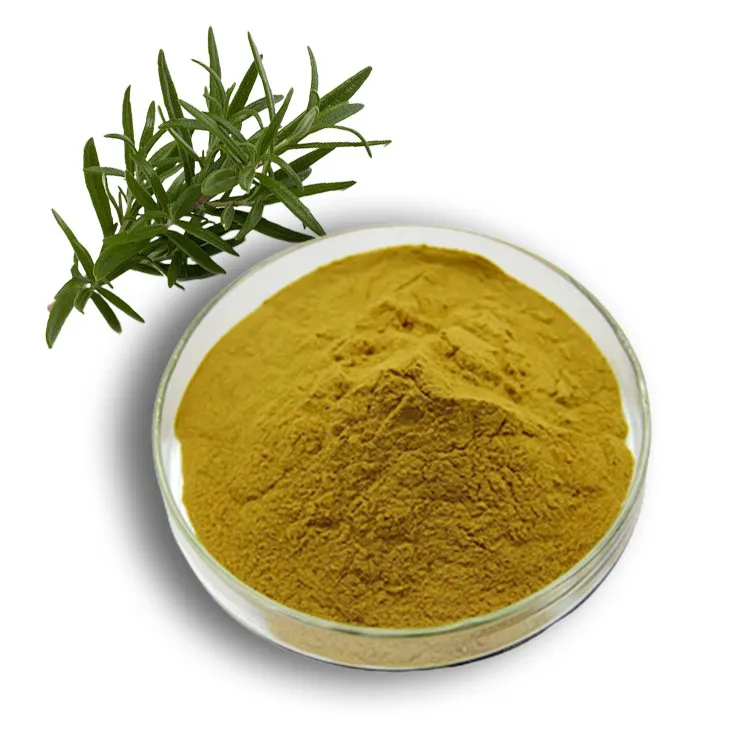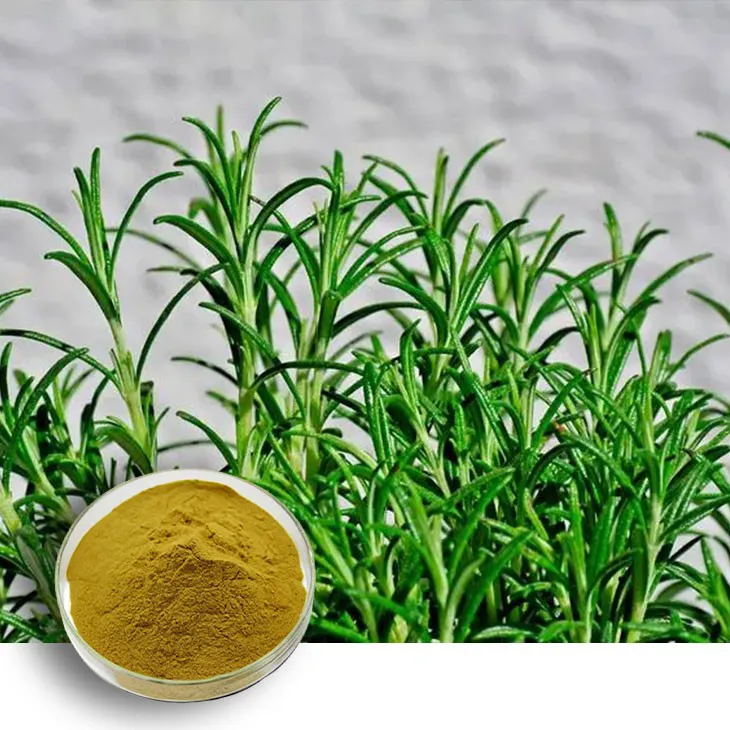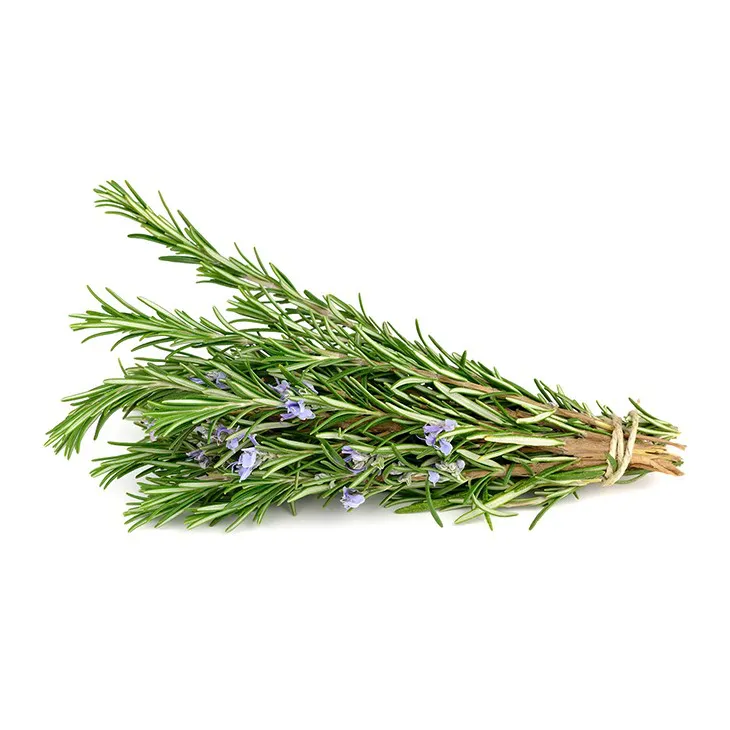- 0086-571-85302990
- sales@greenskybio.com
Rosemary extract: Uses, advantages, and manufacturing processes.
2024-11-12

1. Introduction
Rosemary (Rosmarinus officinalis) is an aromatic evergreen shrub native to the Mediterranean region. For centuries, it has been used in traditional medicine, cooking, and various cultural practices. In recent years, Rosemary extract has gained significant attention in the scientific and industrial communities due to its numerous beneficial properties. This extract is rich in bioactive compounds that make it a versatile ingredient in different sectors.

2. Chemical Composition of Rosemary extract
Rosemary extract contains a complex mixture of compounds, with the most important ones being:
- Carnosic acid: This is one of the major antioxidant components in rosemary extract. It has been shown to have strong free - radical - scavenging abilities, which play a crucial role in protecting cells from oxidative damage.
- Rosmarinic acid: Another important compound, rosmarinic acid has anti - inflammatory, antioxidant, and antimicrobial properties. It is also involved in various biological activities within the body.
- Diterpenes: These are a class of compounds that contribute to the overall biological activity of the extract. Some diterpenes in rosemary extract are associated with antioxidant and anti - cancer properties.

3. Uses of Rosemary Extract
3.1 In the Food Industry
3.1.1 Antioxidant Properties In the food industry, the antioxidant properties of rosemary extract are highly valued. Oxidation is a major cause of food spoilage, leading to off - flavors, changes in color, and a reduction in nutritional value. Rosemary extract can prevent or slow down this oxidation process. For example, it can be used in oils (such as olive oil) to prevent rancidity. By scavenging free radicals, it helps to maintain the freshness and quality of the oil for a longer period.
3.1.2 Flavor and Aroma Rosemary has a distinct and pleasant flavor and aroma. The extract can be used as a natural flavoring agent in a variety of food products, including meats, sauces, and baked goods. It imparts a unique herbal and slightly spicy flavor that can enhance the overall taste profile of the food. For instance, in the production of sausages, a small amount of rosemary extract can add a depth of flavor that is both appealing and characteristic.
3.2 In the Cosmetic Industry
3.2.1 Anti - Inflammatory Effects Skin inflammation can be caused by various factors such as environmental pollutants, UV radiation, and certain skin conditions. Rosemary extract, with its anti - inflammatory properties, can help soothe irritated skin. It can be used in creams, lotions, and serums to reduce redness and swelling. For example, in products designed for sensitive skin, rosemary extract can be a key ingredient to calm and protect the skin.
3.2.2 Antioxidant Activity on the Skin Just as in the food industry, the antioxidant activity of rosemary extract is beneficial for the skin. Free radicals on the skin can lead to premature aging, wrinkles, and a dull complexion. By neutralizing these free radicals, the extract helps to keep the skin looking youthful and healthy. It is often included in anti - aging skincare products to promote collagen production and maintain skin elasticity.
3.2.3 Hair Care Rosemary extract is also used in hair care products. It can stimulate hair growth by improving blood circulation to the scalp. Additionally, it has antimicrobial properties that can help keep the scalp clean and free from dandruff - causing fungi and bacteria. Shampoos and hair tonics containing rosemary extract are popular for promoting healthy hair growth and maintaining a healthy scalp.
3.3 In the Pharmaceutical Industry
3.3.1 Potential Anti - Cancer Properties Some studies have suggested that certain compounds in rosemary extract, such as diterpenes, may have anti - cancer properties. These compounds are thought to interfere with the growth and spread of cancer cells in vitro and in some animal models. However, more research is needed to fully understand the potential of rosemary extract in cancer treatment.
3.3.2 Anti - Microbial and Anti - Fungal Activities Rosemary extract has been shown to possess antimicrobial and anti - fungal activities. It can be used in the development of topical medications for treating skin infections caused by bacteria or fungi. For example, in the treatment of minor skin fungal infections like athlete's foot, rosemary extract - based formulations may offer a natural alternative to synthetic antifungal drugs.
3.4 In the Agricultural Industry
3.4.1 Natural Pesticide Rosemary extract can act as a natural pesticide. It has insect - repellent properties that can protect crops from certain pests. For example, it can be sprayed on plants to deter aphids and other small insects. This provides an environmentally - friendly alternative to synthetic pesticides, which can have negative impacts on the environment and human health.
3.4.2 Plant Growth Promotion There is also evidence to suggest that rosemary extract can promote plant growth. It may enhance the uptake of nutrients by plants and improve their overall resistance to environmental stresses such as drought and disease. This can be beneficial for sustainable agriculture practices.

4. Advantages of Rosemary Extract
4.1 Natural and Safe One of the major advantages of rosemary extract is that it is a natural product. Compared to many synthetic additives used in various industries, it is generally considered safe for human consumption and use. It has a long history of use in traditional medicine and cooking, which further supports its safety profile. In the food industry, consumers are increasingly demanding natural ingredients, and rosemary extract meets this demand.
4.2 Multi - Functional As described above, rosemary extract has multiple functions. It can act as an antioxidant, anti - inflammatory, antimicrobial, and more. This multi - functionality makes it a cost - effective ingredient in various products. For example, in a cosmetic product, it can provide both antioxidant and anti - inflammatory benefits, reducing the need for multiple synthetic ingredients.
4.3 Environmentally - Friendly The production and use of rosemary extract are relatively environmentally - friendly. Since it can be used as a natural pesticide, it reduces the reliance on synthetic pesticides that can contaminate soil and water. Additionally, rosemary is a relatively easy - to - grow plant, and its cultivation can be sustainable.

5. Manufacturing Processes of Rosemary Extract
5.1 Solvent Extraction Solvent extraction is one of the most common methods for obtaining rosemary extract. In this process:
- The rosemary plant material (usually the leaves) is first dried to a suitable moisture level.
- A solvent, such as ethanol or hexane, is then added to the dried plant material. The solvent helps to dissolve the bioactive compounds present in the rosemary.
- The mixture is then stirred or agitated for a certain period to ensure maximum extraction of the compounds.
- After that, the mixture is filtered to separate the liquid extract (containing the dissolved compounds) from the solid plant residue.
- The solvent is then evaporated from the liquid extract, leaving behind the concentrated rosemary extract.
5.2 Supercritical Fluid Extraction Supercritical fluid extraction is a more advanced and cleaner method. Supercritical carbon dioxide (scCO₂) is often used as the extraction medium. Here's how it works:
- Carbon dioxide is pressurized and heated to reach its supercritical state, where it has properties of both a liquid and a gas.
- The supercritical CO₂ is then passed through the rosemary plant material. In this state, it can selectively extract the bioactive compounds from the plant.
- By adjusting the pressure and temperature, the selectivity of the extraction can be controlled, allowing for the extraction of specific compounds.
- After the extraction, the pressure is released, and the CO₂ returns to its gaseous state, leaving behind the pure rosemary extract.
6. Conclusion
Rosemary extract is a remarkable natural product with a wide range of uses and numerous advantages. Its diverse applications in the food, cosmetic, pharmaceutical, and agricultural industries are due to its rich chemical composition and beneficial properties. The manufacturing processes, such as solvent extraction and supercritical fluid extraction, allow for the efficient production of high - quality extracts. As research continues, it is likely that even more applications and benefits of rosemary extract will be discovered, further enhancing its value in various sectors.
FAQ:
What are the main antioxidant compounds in rosemary extract?
Rosemary extract contains several antioxidant compounds, with carnosic acid and rosmarinic acid being the main ones. These compounds are highly effective in scavenging free radicals, which is why rosemary extract is widely used in the food industry to prevent oxidation and extend product shelf - life.
How does rosemary extract enhance skin health in the cosmetic field?
In the cosmetic field, rosemary extract enhances skin health in multiple ways. Its anti - inflammatory properties can reduce skin irritation and redness. It also contains antioxidants that can protect skin cells from damage caused by free radicals. Additionally, it may have antimicrobial properties that help keep the skin clean and healthy.
What are the common extraction techniques for rosemary extract?
Common extraction techniques for rosemary extract include solvent extraction and supercritical fluid extraction. Solvent extraction often uses organic solvents like ethanol to dissolve the active compounds from rosemary. Supercritical fluid extraction, typically using carbon dioxide as the supercritical fluid, can be more selective and produce a higher - quality extract with less solvent residue.
Can rosemary extract be used in pharmaceutical applications?
Yes, rosemary extract can be used in pharmaceutical applications. Its antioxidant and anti - inflammatory properties may have potential in treating certain diseases or conditions. For example, it could be studied for its role in reducing oxidative stress - related disorders. However, more research is needed to fully explore its pharmaceutical applications.
How is the quality of rosemary extract determined?
The quality of rosemary extract can be determined by several factors. The content of key active compounds, such as carnosic acid and rosmarinic acid, is an important indicator. Purity, free from contaminants and excessive solvent residues, is also crucial. Analytical techniques like high - performance liquid chromatography (HPLC) are often used to measure the levels of active compounds and ensure the quality of the extract.
Related literature
- Rosemary Extract: Chemistry, Antioxidant Properties and Applications in Food and Health"
- "The Bioactive Compounds of Rosemary and Their Potential in Cosmetics"
- "Manufacturing Processes of Rosemary Extract: A Review"
- ▶ Hesperidin
- ▶ citrus bioflavonoids
- ▶ plant extract
- ▶ lycopene
- ▶ Diosmin
- ▶ Grape seed extract
- ▶ Sea buckthorn Juice Powder
- ▶ Beetroot powder
- ▶ Hops Extract
- ▶ Artichoke Extract
- ▶ Reishi mushroom extract
- ▶ Astaxanthin
- ▶ Green Tea Extract
- ▶ Curcumin Extract
- ▶ Horse Chestnut Extract
- ▶ Other Problems
- ▶ Boswellia Serrata Extract
- ▶ Resveratrol Extract
- ▶ Marigold Extract
- ▶ Grape Leaf Extract
- ▶ blog3
- ▶ Aminolevulinic acid
- ▶ Cranberry Extract
- ▶ Red Yeast Rice
- ▶ Red Wine Extract
-
Cactus Extract
2024-11-12
-
Sea buckthorn Juice Powder
2024-11-12
-
Grape Leaf Extract
2024-11-12
-
Cranberry Extract
2024-11-12
-
Uridine-5'-monophosphate Disodium salt
2024-11-12
-
Black Garlic Extract
2024-11-12
-
Peppermint Extract Powder
2024-11-12
-
Berberis aristata Extract
2024-11-12
-
Hawthorn powder
2024-11-12
-
Green coffee bean Extract
2024-11-12





















